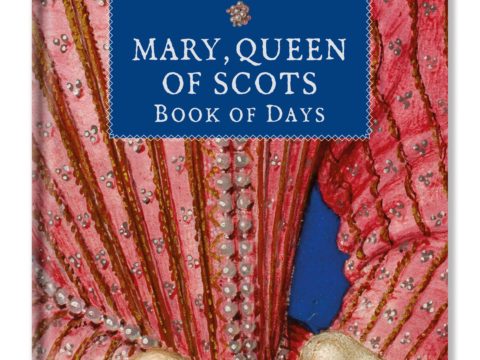The King's Beloved Niece
Lady Margaret Douglas
Chapter 3 : Queen of Scots' Mother-in-Law
In May Margaret’s interrogators complained she was being extremely obstinate in her replies to charges that included treason in the recent war in Scotland, and secret communications with a foreign monarch, (Mary, Queen of Scots) as well as the French and Spanish ambassadors. There were also said to be ‘proofs’ that Margaret did ‘not love the Queen’.
Bishop claimed Margaret had persuaded Mary I to imprison Elizabeth in the Tower in 1554 – which was believable as Mary I had wanted to leave Margaret the throne, against what proved possible. Other servants confessed that Margaret often referred to Elizabeth as a bastard. They further described how her fool would roundly mock Elizabeth and her favourite Robert Dudley. Dudley’s wife, Amy Robsart, had been found at the bottom of a flight of stairs in 1560 with a broken neck, and the servants said Margaret called him a pox-ridden wife-murderer.
There was even an attempt to accuse Margaret of planning to kill the Queen with witchcraft, a smear Cecil had used successfully against several Catholics the previous year. Margaret often heard Mass said ‘by one little Sir William’ and it was being alleged that she was in contact with ‘witches and soothsayers’, even that she had conjured the lightening that had burned down of the steeple of St Paul’s in 1561 on the feast of Corpus Christi.
It was to be Cecil’s life’s work to prevent any Catholic inheriting Elizabeth’s throne, and it is this Elizabethan antagonism to Margaret’s post Marian Catholicism that has been read into her relationship with Henry VIII. It is the kind of anachronism we see time and again in Tudor history, with later anti Catholic attitudes projected into the past.
Meanwhile, with fear of witchcraft being stoked in Parliament, where MPs were making it an offence in common law, Cecil had been busy seeking information in Scotland to ‘prove’ Margaret illegitimate. This concerned Margaret still more than the wild claims of treason and occult practises, which Lennox characterised as the lies of, ‘exploiters, hired men and other fantastical persons’. When Margaret learned that Bishop had described her as ‘a mere bastard’, she fired off a furious missive, reminding Cecil, ‘Even as God hath made me, I am lawful daughter to the Queen of Scots [Margaret Tudor] and the Earl of Angus which none alive is able to make me other’.
In the end Elizabeth chose to leave Margaret’s life unharmed and her legitimacy intact. Margaret’s royal claims remained a useful counter balance to those of the Protestant Katherine Grey. The following year, with Elizabeth believing Margaret’s ambitions had been tamed by her imprisonment, Margaret and Lennox were freed. Margaret even became godmother to Cecil’s baby daughter in 1564, and named the child Elizabeth. But behind the scenes she continued to seek support for her son’s marriage.
Eventually Margaret’s allies helped convince Elizabeth to grant Darnley a passport to Scotland, and in April 1565 a horrified Elizabeth realised his marriage to the Queen of Scots might actually go ahead. It was in a failed effort to prevent it that Margaret was, at last, returned to the Tower. For nearly two years following Darnley’s proclamation as King of Scots, Margaret remained imprisoned – with disastrous consequences for mother and son.
The new Spanish ambassador, Diego Guzman de Silva, believed that if Margaret had been in Scotland her good counsel would have prevented the breakdown of Darnley’s marriage, and his involvement in the killing of his wife’s principle servant, David Riccio, in 1566. As it was, Darnley’s misjudgements paved the way to his murder in Edinburgh in 1567.
When Margaret was given the terrible news of Darnley’s death, she collapsed in ‘such passion of mind’ it was feared she might die of grief. To ease her suffering Elizabeth had her moved out of the Tower and by the time Mary, Queen of Scots was overthrown in Scotland and fled to England in 1568, Margaret was free once more. It was the safety of her infant grandson, James VI, that now most concerned Margaret.
Although James is known as a ‘Stuart’, using the French spelling of ‘Stewart’ favoured by his mother, the dynasty takes its name from the paternal line represented by Margaret’s son Darnley – and it was a line she was determined to protect. In 1570 Margaret persuaded Elizabeth to accept Lennox as James’s regent in Scotland while she remained in England as his ambassador at Court. The couple kept in close touch, with Lennox relying on his ‘Good Meg’ for her advice until he was shot in 1571, during a raid on Stirling made by supporters of the imprisoned Mary, Queen of Scots. His last act was to send his love to Margaret.






